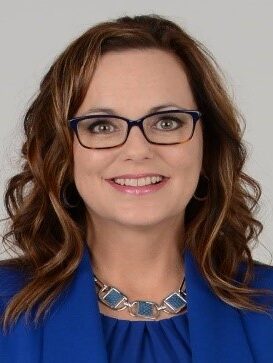By Samantha Compton
This month, we will complete our closer look at Financial Principle #5: Protect the Income, Grow the Rest. This is the final article in this 12-part series, and my hope is that at some point during the series, you have found something valuable to help you in your long-term financial journey!
Last month, we discussed how to estimate the net amount of income you will need in retirement. Once you have determined the net amount, you’ll want to inflate that number by at least 15-20% (depending on your tax bracket in retirement) to allow for taxes. This will determine the gross income needed in retirement.
Next, you are ready to begin looking at what guaranteed income sources you may have. Most people will at least receive Social Security, either their own benefit or a spousal benefit. (To create a detailed report of your estimated benefit or to find more information about spousal benefits, visit the Social Security website at ssa.gov) Some people have a pension benefit as well. If you are entitled to a pension benefit, you’ll want to request an estimate of your benefits based on the date you plan to retire. Contact the present or past employer where you earned your pension benefit to determine the best way to acquire your benefit estimation. Most pensions will offer a number of payout options. Your personal circumstances will be the determining factor for which option is best suited for you and another great reason to work with a financial professional to help you sort through these decisions!
Once you have your guaranteed income amounts, simply take the gross amount needed and subtract your guaranteed sources of income. If more income is still needed, that is referred to as your income gap. The income gap will need to be filled by the assets you have saved. Remember that you always want to use the least amount of assets necessary to guarantee your desired level of income. When possible, it is best to remove as much risk from your income in retirement as possible.
While many have traditionally used the stock and bond markets to generate income from their savings, recent years have made that more challenging than it used to be. You may have heard of the 4% rule. This is the “rule of thumb” that as long as you don’t take withdrawals of more than 4% of your overall portfolio each year, you “should” not run out of money. However, everyone has saved different sums of money and may not need 4% or may even need much more than 4% to survive. Many now even consider that withdrawal percentage to be too high as investment portfolios have struggled to get that much yield over the last several years. We have had great growth but not much yield or “income.” If you have an income gap, I encourage you to consider other income options in addition to the traditional market-based strategies and withdrawal rates. Many times, an annuity with an income rider can provide guaranteed growth prior to starting income, as well as potentially higher guaranteed withdrawal rates. This allows for fewer assets to be used for producing income which in turn leaves more assets that can be allocated for growth. Also, an annuity can potentially help to eliminate the risk of outliving your assets. If a lifetime income rider is added to the policy, it provides an income stream you cannot outlive. What’s more, any remaining cash value in the annuity after you and your spouse have passed is fully inheritable. While I do not recommend an annuity as a growth vehicle, it can be a very valuable tool for creating income and is worth considering. It’s similar to purchasing your own personal pension. Keep in mind that not all annuities are alike. Some annuities are internally expensive and carry downside risk, while some have no fees at all and are principal guarantee. Because of this, I recommend using a full-service, fiduciary advisor to help you explore what investment products might be available (including annuities) to create the income you need using the least amount of assets and taking the least amount of risk possible.
Once you have identified the amount of assets needed to produce income, and especially if you are within 5-7 years of retirement, you may want to remove those income assets from risk. This is a phase of investing we call the “preservation” stage. Once you have done this preservation, your chance of not being able to retire due to market volatility is greatly reduced, if not eliminated. Trust me when I say this can make your last few years of working much less stressful!
I truly believe that the Principle “Protect the Income, Grow the Rest” is the single largest difference-maker in someone being able to experience a more peace-filled pre and post-retirement lifestyle.
Next month, we will review and complete this series on the 5 Principles of Financial Planning!
ACTION STEP:
- Go to ssa.gov and scroll down to “My Social Security.” Click and create your login to find your estimated Social Security benefit amounts for age 62, Full Retirement Age, and age 70.
- If you think you may have a pension benefit and are within 5-10 years of retirement, inquire about what your benefit options and estimated monthly benefit amounts will be on the date, you hope to retire.

Samantha Compton is an SWSM contributor and financial advisor. She is also a Senior Financial Advisor & Women’s Investment Specialist with an SEC Registered Investment Advisor Firm in the Kansas City, MO area. She places a high value on financial education and believes it is essential for creating and sticking to a well-written financial plan!










